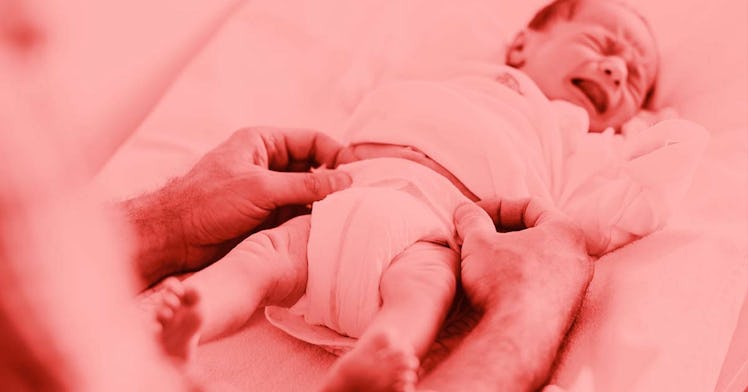What Causes Thrush In Babies?
Thrush is common for babies because they're still developing an immune system

Even before a child grows teeth, chances are parents might see flashes of white in their kid’s mouth. It’s usually just milk residue, but in some cases, white patches could be sores that indicate a baby has developed a case of thrush. But what exactly is thrush in infants and how can parents help babies that have it?
What is Thrush?
Thrush is a mouth infection that is caused by the type of common yeasts called candida. As Pediatrician Dr. Tracy Hall explains, “Thrush is most common in babies under four months of age because their immune systems have not yet gotten primed to recognize when oral yeast gets overgrown and needs to be fought off.”
How Do Babies Get Thrush?
When candida levels get too high, thrush infections can cause white or yellow patches to develop in the mouth. While not all cases of thrush are painful for babies, sometimes the patches can get sore, bleed, or cause cracking at the corners of the mouth. When this happens, babies can get understandably fussy or refuse to eat.
Dr. Hall assures parents that thrush in infants is a very common condition and not suggestive of any unusual underlying problem. “If a parent is concerned their baby might have thrush, they really should see a medical provider,” she says. “Parents can get confused between typical milk tongue and true oral thrush, and we don’t want to give medication to infants unless they have a confirmed diagnosis. So it’s important to get it diagnosed within a few days.”
The telltale sign that your baby has milk tongue and not thrush? Those white areas can easily be wiped away if they are milk, but stick around if they are sores from oral thrush.
How Is Thrush in Babies Treated?
Doctors may choose to monitor a mild case of thrush but not prescribe treatment. If your doctor does determine that medication is needed, it would be in the form of a liquid anti-fungal that can be applied to the inside of your baby’s mouth with a dropper or small brush.
Even in a mild case of thrush, early diagnosis is important because it allows breastfeeding mothers to receive treatment in order to stem a cycle where thrush escalates between mom and baby. According to Stanford Children’s Health, “Breastfeeding mothers may develop thrush on their nipples. If you breastfeed, both you and your child will be treated. This is to prevent passing the infection back and forth. You may be given an ointment to apply to your skin or an oral anti-fungal medicine.”
Can I Prevent Thrush in My Baby?
Since Candida is found naturally in the skin and on the mouth, it’s important to clean anything that your baby may put in their mouth. This includes your hands, your baby’s hands, pacifiers, and bottle parts. These steps are especially important for children who are at a greater risk for thrush, which Stanford Children’s Health considers:
- Infants who had a very low birth weight
- Newborns who passed through the birth canal of a mother with a yeast infection
- Babies who have taken antibiotics
- Babies who use a pacifier often
- Babies who have a weak immune system
Know that if your baby does develop thrush, there’s likely very little you could have done about it. Until your baby grows into his immune system, those pesky yeasts are a challenge to keep in check